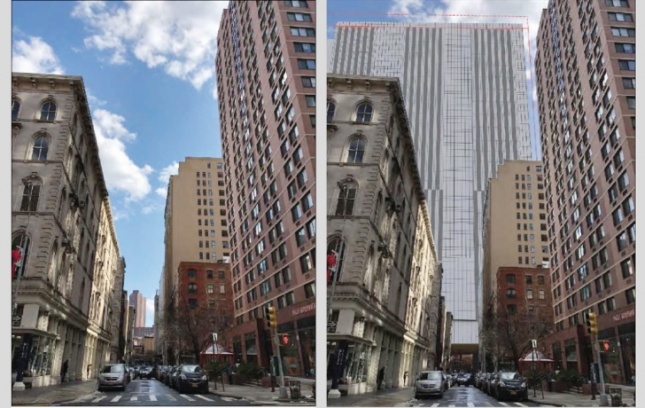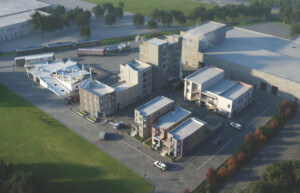Technology is abstracting so much of our lives that it is easy for change to come out-of-sight and out-of-mind. Many physical objects have been reduced to algorithms hidden in cloud servers and embedded in code on handheld devices. Remember CDs, day planners, watches, and cameras?
Architecture, on the other hand, is more difficult to eliminate and maintains its relevance by making visible the invisible within our society. For example, a proposed Manhattan jail tower towering 45 stories over Chinatown and Tribeca makes visible the fact that we can’t just abstract and sweep away our country’s mass incarceration problem. This proposal confronts us—including some very wealthy residents of those neighborhoods—with the harshness and scale of the problem.
New York City has chosen four sites—one each in Manhattan, Brooklyn, the Bronx, and Queens—for relocating the jail facilities currently located on Rikers Island. Activists say that moving the incarcerated closer to their homes is a more humane way to keep them connected with their families and communities, citing the difficulty of visiting the island as well as transportation costs for court dates.
However, the realities of moving 5,000 inmates brings a spatial challenge: Where do you put them? So far, each proposed site seems tone-deaf about how they would affect the surrounding streets and neighborhoods.

Lynn Ellsworth of Human-scale NYC and Tribeca Trust has done a great service by publishing her paper, “How Did Reform of the Criminal Justice System Turn Into a Real Estate Project?” that highlights how the city will sell Rikers Island to real estate developers for $22 billion and then spend another $11 billion dollars on the new jails. In addition, she has also done a deep urban design analysis on the 45-story Manhattan jail on the edge of Chinatown and Tribeca and produced a series of ghost building images that show how the Manhattan jail will negatively affect its surroundings.
However, her proposal calling for the city to keep and renovate Rikers Island highlights the contradictions in what can be considered progress on this issue. Perhaps the real question needed now is, “How can we rethink the entire jail debate?”
The official renderings from the city’s Department of Correction show only exterior images.
A recent New Yorker story, “Inside the Mayor’s Plan to Close Rikers,” quotes architect Frank Greene, who is working on the new jail plans. “I could see these buildings we’re doing for New York City someday becoming community colleges with dormitories inside them,” he told the magazine, a statement which represents the sort of design thinking we endorse. But this thinking needs to be put into signed and approved architectural plans. As the plan currently stands, the fact that the city would build a massive skyscraper jail that would replace half of the historic “Tombs” detention facility on Centre Street with no concrete plan for what will be inside of the building, how incarcerated people will actually live in the building, and what facilities are planned for visitors is truly insane.
This is a moment for New York City, its corrections department, its local politicians, and the public to discuss what our incarceration policy should look like on an institutional and facilities level. All we have now are promises and nothing about how these monster facilities will actually operate.
Finally, one noted criminal justice reform advocate, Ruth Wilson Gilmore, makes a serious case for closing all prisons. In New York Times Magazine, she asks, “Why don’t we think about why we solve problems by repeating the kind of behavior that brought us the problem in the first place?” The Times article points out that for Gilmore, prison abolition is “both a long-term goal and a practical policy program, calling for government investment in jobs, education, housing, health care—all elements that are required for a productive and violence-free life.” This is the question to ask as President Trump has just signed his First Step Act, which will begin the release of thousands of prisoners from federal prisons; and as prisons in California, by court order, have begun to empty out their overcrowded facilities by releasing low-level offenders.
Rather than build more jails or prisons, we should ask if we really need carceral structures in the way we have thought about them since the 19th century, as places of punitive architecture and inhumane residence. But we also need to ask if we even need more jails or prisons, or whether there might be better ways to rehabilitate people in the future.











